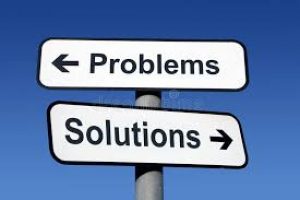“Another time perhaps you could teach us holistically instead of just telling us that holistic approaches are helpful!”
I can still see the woman speaking to me so many years ago. She was kind and gentle this Cree Elder I met in Saskatoon, as she encouraged me to stretch next time, to move away from the comfortable words, of the researcher, and instead to embrace a more holistic approach myself, as I was recommending others should do!
I was embarrassed when I realized the absurdity of what I had just done, so foolish I felt, to have simply talked. I didn’t make that mistake again. Since then every one of my workshops has been filled with a weaving of holistic approaches, a counterpoint to my words. Collage, clay, collections of hats, masks, finger puppets, and more, along with many materials to fiddle with, have helped people express themselves in different forms, and integrate new learning with old knowledge. These materials have supported participants to settle their nervous systems and stay present to learn. But more importantly, I have heard the experience made it easier for many educators, counsellors, administrators, to imagine using such resources to help others learn with more ease, more joy, and more success.
I find it fascinating that I hadn’t seen the contradiction in what I was doing, until it was pointed out. I appreciated that once again an Indigenous elder had shared wisdom with me with careful gentleness, not adding to my shame, but simple, matter-of-fact, a gift to use next time. So important and precious that, taking care not to connect to the old wounds, not to make it easy for shame to surface, settle in, instead making it OK not to know, until we know. Maya Angelou reminds us that we did what we knew how to do, and insists we avoid beating ourselves up for what we didn’t do so well earlier. Though she is equally firm that when we know better, we must do better. I like that reminder, an important guidance for us all, and vital in the aftermath of violence. For those of us who hope to be allies, for ourselves as well as others, to support moving away from shame and blame.
There was another elder, a pipe-carrier in the Northwest Territories, who first gently set me on this path of understanding that violence, trauma, neglect, impact all parts of the self, and that approaches that draw on all those same parts—body, spirit, emotions, as well as mind—can help us connect to our own truths, our own capacity to express ourselves, to put out what has been absorbed, and take in new knowledge, new possibility, and in the process strengthen new paths in the brain, instead of those old well-worn ones to the litany of bad, wrong, stupid, don’t belong.
I can see this wise woman too. In a Yellowknife café, she grabbed a napkin to help me understand, to illustrate that western society is itself lost with its overemphasis on the mind. A wheel with its axle off-centre won’t move well she pointed out, as she spoke of the value of balance between the quadrants.
I have seen her wisdom play out so many times since, as people certain they are stupid, find their own brilliance and clarity when they play with metaphor, or illustrate what they didn’t know they knew in collage, or feel their way to settling their own nervous system as they manipulate a ball of modelling clay.
I’ve seen it myself too. More and more now I value spending time creating with something other than words. I’m just back this week from a course in glass mosaic. It fed my spirit, returned me to a sense of buoyancy, of options that had slid away as I slogged at my tasks. The process itself was healing, my total focus closed down my busy mind, giving it a rest that has led to fresh energy and enthusiasm. The product too, now hung in my garden, is reminding me of what I expressed, unconsciously that week, the excitement of possibility, when I get out of my own way, explore creative ways forward!
[sg_popup id=”1622″ event=”inherit”][/sg_popup]








Leave a Reply
We want to hear from you